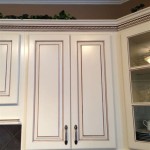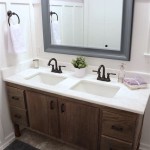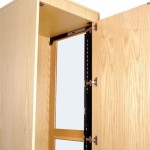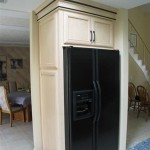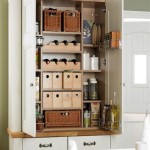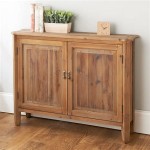Can You Paint Over Painted Cabinets? A Comprehensive Guide
Painting kitchen cabinets is a cost-effective way to refresh a dated kitchen without the expense and disruption of a full renovation. However, if your cabinets have already been painted, the question arises: can you paint over painted cabinets successfully? The answer is yes, but it requires careful preparation and the right techniques to achieve a durable and aesthetically pleasing finish. Simply slapping a new coat of paint on top of an existing one will likely result in chipping, peeling, and an overall unprofessional appearance. This article will outline the steps necessary to ensure a successful paint job, covering crucial preparation techniques, proper material selection, and recommended application methods.
The success of painting over painted cabinets hinges on proper adhesion. The new paint layer needs to bond securely to the existing surface. If the original paint job is failing or inadequately prepared, the new coat will inherit those flaws. Failing to address underlying issues will only result in a more extensive and potentially costly repair in the future. Before even considering paint color, the existing surface must be thoroughly assessed and prepared.
Proper preparation is the most critical element of this project. It's a time-consuming process, but cutting corners here will almost certainly lead to unsatisfactory results. This includes thoroughly cleaning the cabinets, sanding to create a suitable surface for the new paint to adhere to, and priming to ensure adequate bonding and color consistency.
Key Point 1: Thorough Cleaning and Degreasing
Kitchen cabinets are exposed to grease, grime, and food splatters, creating a barrier that prevents paint from adhering properly. Even if the cabinets *look* clean, a film of residue is likely present. Failing to remove this residue will compromise the entire paint job.
The cleaning process should begin with removing all hardware, like knobs, pulls, and hinges. This allows access to all surfaces and prevents these items from being accidentally painted. Labeling each piece of hardware and noting its location will streamline the reassembly process later. Store the hardware in a safe place where it won't get lost or damaged.
Next, use a strong degreaser specifically designed for kitchens. Trisodium phosphate (TSP) was a common choice but has been largely replaced by phosphate-free alternatives due to environmental concerns. Look for products that are specifically formulated to cut through grease and grime. Follow the manufacturer's instructions carefully, paying attention to dilution ratios and safety precautions. Wear gloves and eye protection to protect yourself from potential irritants.
Apply the degreaser with a sponge or cloth, scrubbing the cabinets thoroughly. Pay particular attention to areas around the stove, sink, and handles, where grease buildup is typically most concentrated. Rinse the cabinets thoroughly with clean water to remove all traces of the degreaser. Allow the cabinets to dry completely before proceeding to the next step.
For stubborn grease stains, a second application of degreaser may be necessary. In extreme cases, a gentle abrasive cleaner, such as a powdered cleanser, can be used with caution. Test the abrasive cleaner in an inconspicuous area first to ensure it doesn't damage the existing finish.
Once the cabinets are thoroughly cleaned and degreased, inspect them carefully for any remaining residue. A clean, dry surface is essential for proper paint adhesion.
Key Point 2: Sanding for Adhesion and a Smooth Finish
Sanding serves two primary purposes: it creates a slightly roughened surface for the new paint to grip and it smooths out any imperfections in the existing finish. The goal is not to completely remove the existing paint layer, but rather to create a "tooth" for the new paint to adhere to.
The appropriate grit of sandpaper is crucial. Too coarse, and you risk gouging the surface; too fine, and you won't create enough texture for proper adhesion. A medium-grit sandpaper (around 220-grit) is generally recommended for this purpose. For particularly glossy or slick surfaces, a slightly coarser grit (around 180-grit) may be necessary.
Sanding can be done manually or with an electric sander. An orbital sander is a good choice because it moves in a circular motion, minimizing the risk of creating sanding marks. However, be careful not to apply too much pressure, as this can damage the surface. Hand sanding is often preferred for intricate details or hard-to-reach areas.
Regardless of the method used, sand the entire surface of the cabinets, paying particular attention to edges and corners. Apply even pressure and work in long, smooth strokes. The goal is to create a uniform, slightly roughened surface. Once the sanding is complete, thoroughly remove all sanding dust with a tack cloth or a vacuum cleaner with a brush attachment. Dust particles can interfere with paint adhesion and create a bumpy, uneven finish.
After sanding, inspect the cabinets for any imperfections, such as chips, dents, or scratches. These should be filled with wood filler or spackle and allowed to dry completely. Sand the filled areas smooth and remove any remaining dust before proceeding to priming.
Consider the existing paint type when sanding. If the existing paint contains lead (common in older homes), take appropriate safety precautions, including wearing a respirator and using wet sanding techniques to minimize dust dispersal. Consult local regulations regarding lead paint removal.
Key Point 3: Priming for Optimal Adhesion and Coverage
Priming is an essential step that ensures the new paint adheres properly to the sanded surface, blocks stains, and provides a uniform base for the topcoat. A good primer creates a smooth, even surface, preventing the old paint color from bleeding through and ensuring the new paint color is true and vibrant.
Choosing the right primer is crucial. For painted cabinets, an enamel-based primer or a bonding primer is generally recommended. Enamel-based primers offer excellent adhesion and stain blocking properties. Bonding primers are specifically formulated to adhere to difficult-to-paint surfaces, such as laminate or glossy finishes. Consult with a paint professional to determine the best primer for your specific situation.
Apply the primer in thin, even coats using a high-quality brush or roller. Avoid applying too much primer at once, as this can lead to drips and runs. Allow the primer to dry completely according to the manufacturer's instructions before applying the topcoat. Some primers may require multiple coats for optimal coverage.
After the primer has dried, lightly sand the surface with a fine-grit sandpaper (around 320-grit) to smooth out any imperfections. Remove any sanding dust with a tack cloth. This step ensures a smooth, flawless finish for the topcoat.
Tinting the primer to a similar color as the topcoat can improve coverage and reduce the number of coats of paint required. This is particularly helpful when painting a light color over a dark color.
When applying primer, pay attention to edges, corners, and recessed areas. Use a brush to reach these areas and ensure they are fully primed. Avoid getting primer on the cabinet hardware, as this can be difficult to remove. If primer does get on the hardware, wipe it off immediately with a damp cloth.
Once the priming is complete, the cabinets are ready for the topcoat of paint. Selecting a high-quality paint that is durable and easy to clean is essential for achieving a long-lasting and attractive finish.

Avoid These Mistakes How To Paint Cabinets That Are Already Painted Grace In My Space

Do It Yourself Divas Diy How To Paint Over Red Painted Cabinets Walls

How To Repaint Kitchen Cabinets Painted By Kayla Payne

Do It Yourself Divas Diy How To Paint Over Red Painted Cabinets Walls

Painted Kitchen Cabinets One Year Later The Palette Muse

How To Paint Kitchen Cabinets A Step By Guide Confessions Of Serial Do It Yourselfer

Why I Repainted My Chalk Painted Cabinets Sincerely Sara D Home Decor Diy Projects

How To Paint Veneer Cabinets For A Long Lasting Finish Anika S Diy Life

How To Paint Kitchen Cabinets The Love Notes Blog

How To Paint Laminate Kitchen Cabinets Perfect Finish Tips
Related Posts

